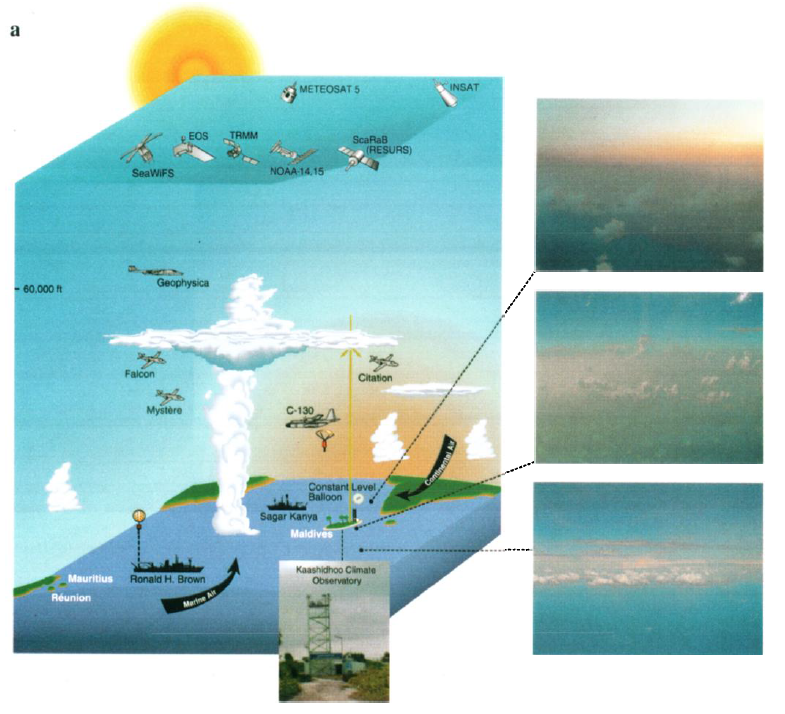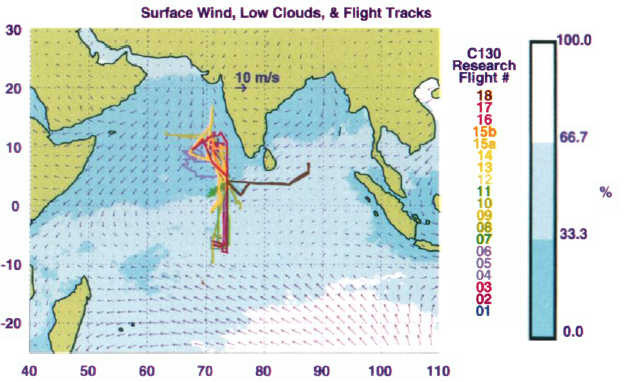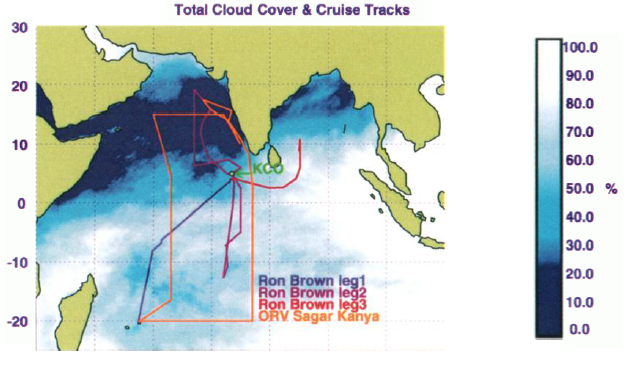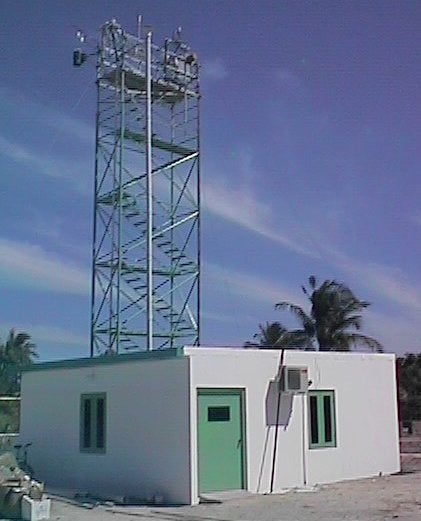INDOEX
Indian Ocean Experiment
The Indian Ocean Experiment (INDOEX) intensive field phase was conducted from January through March 1999 over the tropical Indian Ocean. This region provided an ideal and unique natural laboratory to study the role of anthropogenic aerosols in climate change.
Scientific Objectives
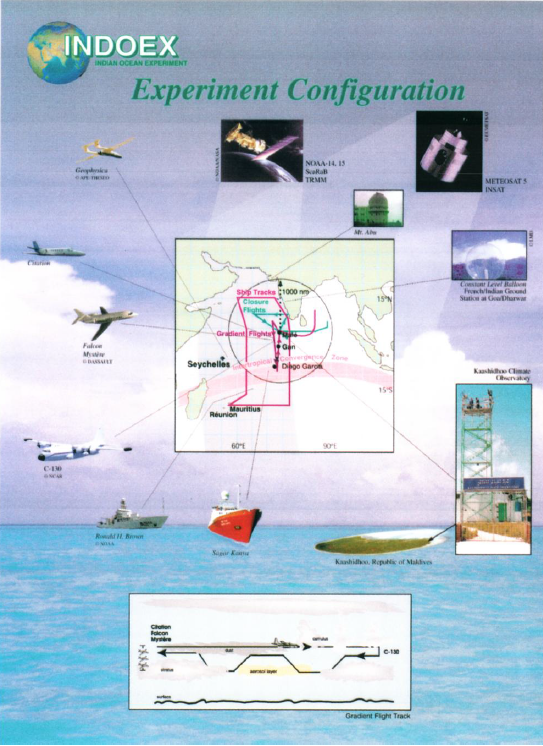 |
|
The INDOEX composite observing system and the domains of the various platforms.
(Click Image for Full Resolution) |
The fundamental goals of INDOEX were two fold:
- to improve our understanding of the aerosols, clouds, and chemistry-climate interactions;
- to use the special INDOEX observations for validation of global climate models (GCM) and chemistry-trasnport models.
Within these goals there were three primary scientific objectives for INDOEX:
- Assess the significance of sulfates and other continental aerosols for global radiative forcing.
- Assess the magnitude of solar absorption in ITCZ cloud systems.
- Assess the role of the ITCZ in the transport of trace species and pollutants.
Additionally, the observations collected were planned to provide some new data to make a modest beginning on three other important issues:
- meteorology of the NE monsoon and the transition period between the NE and SW monsoons;
- regulation of the sea surface temperature in the Indian Ocean warm pool
- interhemispheric and geographical differences in cirrus properties
Instrumentation
The intensive field phase of INDOEX utlized aircraft, ships, surface, and upper air instrumentation to examine the aerosols, clouds, and chemistry of the Indian Ocean.
(Click Image for Full Resolution)
Three aircraft took part in INDOEX and operated out of the Male International Airport, the NSF/NCAR C-130, the Dutch Citation, and the French Mystere 20. The NSF/NCAR C-130 aircraft was focused on radiation, aerosol, and microphysics measurements. The French Mystere 20 documented aerosol and cloud properties including high altitude aerosol layers and thin cirrus over the Arabian Sea and the West-Southwest coast of India. The Dutch Citation-II twin jet aircraft had two sets of insrumentation packages, one for atmospheric chemistry that was available for the first half of the field phase and another for cloud physics measurements that was available for the second half. The APE-THESEO project had two aircraft that were operated out of the Seychelles, the Russian Geophysica and German Falcon.
(Click Image for Full Resolution)
Two ships participated in INDOEX gathering high resolution oceanic measurements: the OR/V Sagar Kanya and R/V Ron Brown. The OR/V Sagar Kanya participated under the sponsership of the Indian National Physics Laboratory and conducted opertions from mid January to mid March 1999. The R/V Ron Brown participated under the sponsership of NOAA and conducted operations from mid February to early April 1999. The ships had nearly continuous monitoring throughout their cruises and on occasions the ships loitered for special data collection efforts. There were also coordinated experiments for intercomparison and other purposes.
(Click Image for Full Resolution)
There were also a number of special observations made from surface locations in India and the Maldives including measurements of aerosol, radiation, meteorology, and chemistry/trace gas parameters. Several locations released special radiosondes during the project (including the ships and dropsondes from the C-130). The French LMD deployed constant level balloons.
Supporting Datasets
|
Kaashidhoo Climate Observatory.
(Click Image for Full Resolution) |
In addition to the datasets derived from the special instrumentation in place for INDOEX a number of supporting data sets were collected over the region. These included:
- ECMWF, FSU, and NOGAPS Model Global Grids
- ECMWF, NCAR MATCH, and NOGAPS Model Grids
- Global GTS surface, upper air and ship/buoy observations
- Meteosat Satellite Data
Also, prior to the INDOEX Intensive Field Phase there were several Pre-INDOEX ship cruises over the region including the R/V Malcolm Baldridge (21 Mar - 21 Apr 1995) and the R/V Sagar Kanya (5 Jan - 4 Feb 1996 and 27 Dec 1996 - 23 Jan 1997). The INDOEX First Field Phase took place in 1998 with a cruise of the R/V Sagar Kanya (18 Feb - 31 Mar 1998) and observations from several surface station and balloon soundings.
All photos copyright University Corporation for Atmospheric Research unless otherwise noted.
